Illustrative Image: Atypical Respiratory Viruses in Sub-Saharan Africa (2013–2023): Prevalence, Impact, and Public Health Strategies
Image Source & Credit: Meridian Bioscience
Ownership and Usage Policy
A recent study by Agyei et al. (2025) titled “Atypical causes of respiratory virus infections in Sub-Saharan Africa from 2013–2023: a systematic review and meta-analysis” published in BMC Infectious Diseases reveals that atypical respiratory viruses (ARVs) in Sub-Saharan Africa (SSA) are underreported, underrecognized, and likely play a significant role in respiratory illnesses, particularly among children and immunocompromised individuals.
“
Atypical respiratory viruses in Sub-Saharan Africa are underreported, underrecognized, and significantly impact vulnerable populations. – Agyei et al. 2025
This systematic review and meta-analysis examined the prevalence, diagnostics, and clinical impact of atypical respiratory viruses (ARVs) in Sub-Saharan Africa, including HMPV, HBoV, Enteroviruses (EVs), Parechovirus (PeV), and Influenza C Virus (ICV). Prevalence rates were Human Metapneumovirus (HMPV 1.52%), Bocavirus (HBoV 0.4%), Enteroviruses (EVs 15%), Parechovirus (PeV 20%), and Influenza C Virus (ICV 1.3%). Co-infections with viruses like Human Rhinovirus were common. HMPV peaked in December–March, HBoV in July–August, while EVs and PeV circulated year-round. Symptoms ranged from mild (fever, cough) to severe (pneumonia, oxygen desaturation). RT-PCR was the main detection method. Limited testing infrastructure and surveillance contribute to underreporting, compounded by high vulnerability from co-infections (HIV, TB, malaria) and poor living conditions. The study highlights the hidden burden of ARVs in SSA, urging expanded surveillance, improved diagnostics, longitudinal studies on seasonal and age patterns, and integration of ARV monitoring into public health frameworks.
How the Study was Conducted
The study employed a systematic review and meta-analysis to evaluate the prevalence and impact of atypical respiratory viruses (ARVs) in Sub-Saharan Africa (SSA) between 2013 and 2023. Following the PRISMA 2020 guidelines, the review was registered in PROSPERO (ID: CRD42024611183) to ensure methodological transparency and adherence to protocol.
The authors employed a comprehensive search strategy was employed across PubMed, Web of Science, Google Scholar, and the Cochrane Library using MeSH terms combined with Boolean operators (AND, OR) to capture all relevant studies. No language restrictions were applied, and only studies published within the 2013–2023 period were considered.
Eligibility criteria were defined using the PICO framework. Participants included individuals of all ages in SSA, with exposure to ARVs such as human metapneumovirus (HMPV), human bocavirus (HBoV), enteroviruses (EVs), parechoviruses (PeV), and influenza C virus (ICV). Outcomes of interest were prevalence, clinical impact, diagnostic methods, seasonality, and co-infections. Observational, longitudinal, cross-sectional, and facility-based studies were included, while studies focusing on typical respiratory viruses, such as RSV and Influenza A, were excluded.
From an initial 548 publications, six studies met the inclusion criteria. Study selection was independently performed by two reviewers, with a third reviewer resolving any disagreements. Data extracted included authorship, publication year, country, study period, virus prevalence, diagnostic methods, and population characteristics. Statistical analyses were conducted using StataSE 16, with meta-analyses visualized through forest and funnel plots to assess prevalence and potential publication bias.
Diagnostics varied by country: multiplex PCR in Botswana, real-time PCR with cell culture in Senegal, conventional RT-PCR in Côte d’Ivoire, qRT-PCR in Kenya, and FilmArray and ePlex panels in Zambia. Seasonal patterns were noted, with HMPV peaking between December and March, HBoV between July and August, and EVs and PeV circulating year-round. Clinical outcomes ranged from mild symptoms, such as fever and cough, to severe cases including pneumonia and oxygen desaturation.
Quality assessment of included studies was performed using the Newcastle-Ottawa Scale (NOS), taking into account study design, sample size, and data collection rigor.
What the Authors Found
The authors found that atypical respiratory viruses (ARVs) in Sub-Saharan Africa (SSA) are underreported, underrecognized, and likely play a significant role in respiratory illnesses, particularly among children and immunocompromised individuals. The study highlights that ARVs—such as HMPV, EVs, HBoV, PeV, and ICV—have measurable prevalence across the region, show distinct seasonal patterns, and often occur alongside co-infections, but limited diagnostic capacity and sparse surveillance have led to substantial underestimation of their impact.
Why is this important
Public Health Blind Spot: ARVs like HMPV, HBoV, EVs, PeV, and ICV are underdiagnosed in SSA, as most surveillance focuses on typical viruses like RSV and Influenza A, leaving many respiratory illnesses unexplained.
Vulnerable Populations at Risk: Children under five, the elderly, and immunocompromised individuals are particularly susceptible, with ARVs causing severe outcomes such as pneumonia and acute lower respiratory infections (ALRI).
Diagnostic Gaps: Limited access to advanced tools like RT-PCR means ARVs often remain undetected, hindering effective tracking, treatment, and prevention.
Policy and Research Implications: Findings highlight the need for expanded surveillance, improved diagnostics, longitudinal studies, and data to guide vaccine development, targeted interventions, and resource allocation.
Global Relevance: Understanding ARVs in SSA contributes to a broader global picture of respiratory disease dynamics and underscores health inequities and the need for international support in strengthening healthcare infrastructure.
What the Authors Recommended
- Expand access to RT-PCR and multiplex testing, invest in affordable diagnostic tools, and integrate ARV testing into routine respiratory illness diagnostics.
- Establish national and regional ARV surveillance programs, integrate monitoring into existing frameworks for RSV and Influenza, and promote real-time data sharing across countries.
- Implement long-term studies to understand ARV impact across age groups, investigate seasonal and geographic variations, and examine co-infections with other pathogens.
- Use research findings to guide vaccine development, targeted interventions, and policy changes, while encouraging international collaboration and funding to support ARV research and infrastructure.
- Prioritize ARV screening and interventions for high-risk groups—children, elderly, and immunocompromised individuals—and address socioeconomic factors that worsen respiratory illness outcomes.
In conclusion, atypical respiratory viruses (ARVs) in Sub-Saharan Africa represent a significant but largely overlooked contributor to respiratory illnesses, particularly among vulnerable populations such as children and immunocompromised individuals. The study by Agyei et al. (2025) underscores the urgent need for expanded surveillance, improved diagnostic capacity, and targeted public health interventions to address this hidden burden. By prioritizing research, integrating ARV monitoring into existing healthcare frameworks, and investing in accessible diagnostic tools, policymakers and health systems can better detect, manage, and prevent ARV-related illnesses, ultimately reducing morbidity and strengthening regional and global respiratory health outcomes.





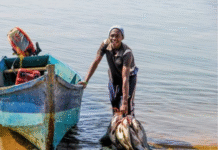
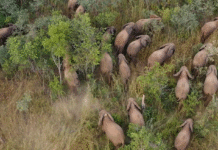

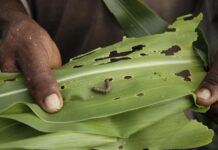

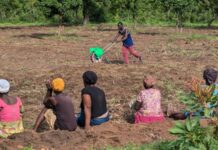

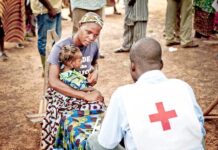



 The African Research (AR) Index is a comprehensive scholarly directory and database focused explicitly on journal publishers that publish and disseminate African research.
The African Research (AR) Index is a comprehensive scholarly directory and database focused explicitly on journal publishers that publish and disseminate African research.

